'प्रभुता' of Sade Teen Shakti Peeth of Maharashtra in Navratri
06 Oct 2021 11:49:49
Today, when we think of Navratri, the first thing that has to appear in shades is the Gujarati's culture, Garba-Dandiya, Gujarati food and all that fun! But do we not somewhere forget to celebrate the significance of festival, the Maharashtrian style? Well, speaking of the Navratri predominance, three and a half Shakti Peeth of Goddess Shakti (Sati) in Maharashtra are a big league! Tuljapur Bhavani of Tuljapur from district Usmanabad, Ambabai from Kolhapur, Renukamata of Mahurgad, Taluka Kinwat district Nanded and Saptashrungi from Saptashrungagarh, Vani district Nasik are the famed Shakti Peeth of the goddess that pilgrims frequent in these 9 days.
The devotees, termed traditionally as Gondhali, Bhutye, Aaradhi, Naiks, spin on the beats of 'Gondhal', a form of ancient folk dance-drama. These perform at night, singing to the accompaniment of cymbals, small drum, Sambal and Tuntune or a single string instrument. People aslo follow certain traditions like offering eyes made of silver to the goddess, sprinkling the path circling the inner sanctum of the Goddess with Kumkum during Navratra.
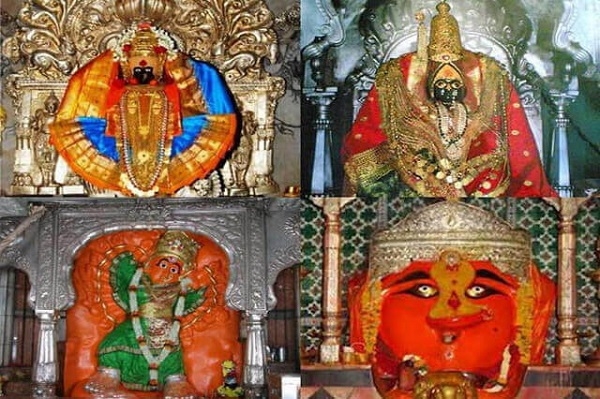
Somewhere in ancient times, King Daksha, unhappy with his daughter Sati's marriage to Lord Shiva, refused to invite Shiva to the yagna he was performing. Relenting to Sati who wanted to visit her father, Shiva allowed his wife to go the yagna. There, Daksha insulted Shiva. Unable to bear her father's disrespect towards her husband, Sati immolated herself. Shiva, in his wrathful form of Veerabhadra, destroyed the yagna and killed Daksha.The ire and grief of Shiva, manifested as the celestial dance of destruction, the Tandav. Lord Vishu, with the aim of stopping the Tandav, used his Sudarshana Chakra, which cut through the Sati's corpse. The parts of her body fell at varied 51 spots all through the Indian subcontinent and these sites came to be called Shakti Peethas. Devi Bhagvata Puranam describes the most favoured places of Goddess as the four holy sites of Kolhapur, Tuljapur, Mahur along with Vani in Maharashtra which were clustered and are called as the 'Sade teen' Shakhipeethas.
1. SaptaShrungaGarh (Vani)
The importance of this place records back to the ancient times. The deity in the fort here has the honour of being a half Shakti Peeth of Goddess Shakti, who is believed to be a form of the Goddesses Mahakali, Mahalakshmi, and MahaSaraswati. It is also believed that after vanquishing the demons ShumbhaNishumbha and Mahishasur, the Goddess resided here for Tapa and Sadhana. The high ridge of the Sahyadri here has seven peaks from which the name of the place, SaptaShrungaGarh has been derived. This is considered the root altar of the eight handed grand idol.
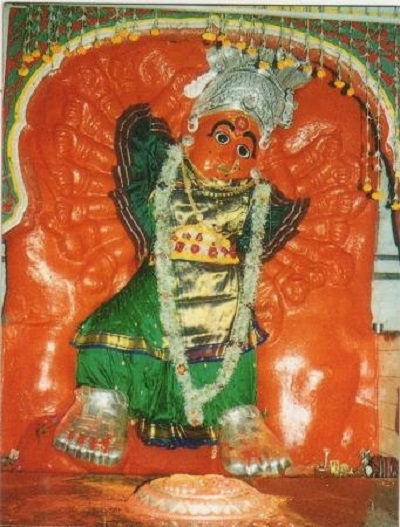
2. Mahur - (Goddess RenukaMata)
Goddess RenukaMata of Mahur is one of the complete Jagrut Shakti Peeth of the Goddess, who is also recognized as the mother of Shri Parshuram. The temple on the fort here was built by Yadava king of Devgiri in the thirteenth century. Further adding to the glory, the fort in Mahur has other holy places along with the Goddess's temple, like Parshuram temple, Dattatraya temple, Anasuya temple, KalikaMata temple.
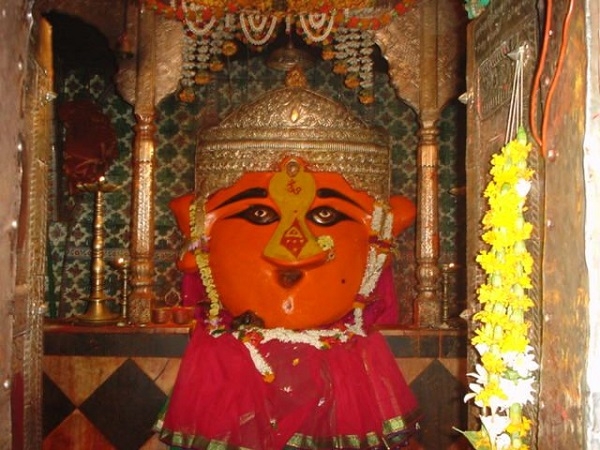
3. Shri Kshetra Tuljapur (TuljaBhavani)
Goddess TuljaBhavani of Tulajapur is again one of the complete Jagrut Shakti Peeth of the Goddess. This deity is well known as 'Aai Bhavani' and is the tutelary Goddess of the state, being the inspirational, motivating deity who was revered by King Shivaji who established his kingdom. 'Aai Bhavani' has been the inspirational, motivating deity who came to the aid of her devotee in each of the Yuga : Anubhuti in KrutaYuga, King Ramchandra (of Ramayana) in TretaYuga (1,296,000 years ago), King DharmaRaja in DwarpaYuga (864,000 years ago) and King Shivaji in the KaliYug (the current Yug).
The Sahyadri section of the Skanda Purana contains the story of this deity: in the KritaYug (1,728,000 years ago), when Rishi Kardam's wife Anubhuti was meditating, the demon Kukar tried to assault her. The devotee Anubhuti entreated Goddess Bhagvati to save her. Goddess Bhagvati revealed herself and fought with the demon Kukar and killed him. On Anubhuti's further entreaty, the Goddess agreed to reside on the mountain ridges. This Goddess is also called as Devi Twarita-Turja-Tulaja (Bhavani ) : Goddess who rushes to the aid of a devotee and fulfils wishes.
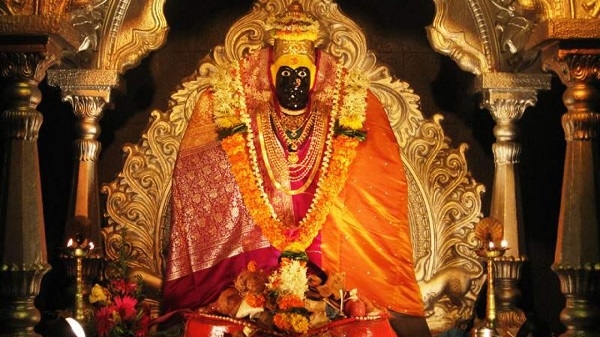
The temple has a south facing entrance that is called the Parmar doorway. The door has a edict carved on it which says that a great devotee by the name of Jagdev Parmar offered his head at the feet of the deity seven times. The inner sanctum is to the west of the community hall in which the artistic and pleasing idol of the deity is seated on a silver throne facing east. The idol is carved out of a stone found in the Gandaki river bed and is proportionate in form. The deity is recognized as AshtaBhuja MahishasurMardini (Eight handed Goddess who killed the demon Mahishasur).
4. Kolhapur (Shri MahaLakshmi)
Shri MahaLakshmi of Kolhapur, fondly known as Ambabai is one of the most famous temples of Hinduism of the state. The temple as evident is located on the banks of the Panchganga River still cluing to search for who actually built the temple. Some researchers opine that the temple was built by the King of Sind lineage from Karharak (today's Karad) before the Shilahar dynasty reign. The Shilahar's of Kolhapur were devotees of the deity and have recorded several time of having been blessed by the deity.
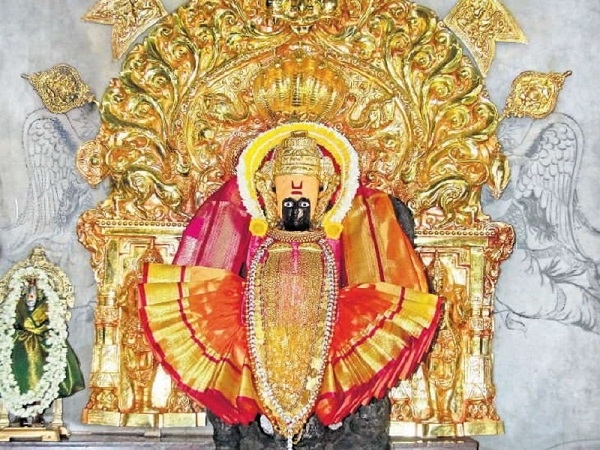
Many researchers are of the opinion that a lot of the ancient structure of the current temple is dated post the Chalukya period. The main structure of the temple is two storied and is built out of the black stone found in the vicinity of Kolhapur. During the month of Ashwin , in Navratra a silver image of the Goddess is placed on a stone pedestal placed here and is revered through traditional rituals. The sanctum is designed such that once a year for a period of 3 days in the lunar months of Kartik and Magh as per the Hindu almanac, an amazing phenomena occurs: the setting rays of the sun fall through the entrance of the temple, reach the inner sanctum and light up feet of the image of MahaLakshmi, gradually rising up to finally fall on the face of the image. This phenomena takes place in a matter of five minutes; devotees throng to experience this.
Spanning these nine crucial days of Navratri, I revere to celebrate existence of the divine being in the state. Let's together stage fanatical decorations, recitals of stories and the mythological legend, chanting of scriptures, prayers this navratri and keep up with the spirit of this joyous festival.
.
.